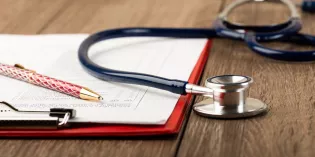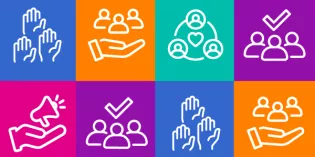Our evidence-based clinical guideline - updated in 2015 and reviewed in 2016 and 2019 - provides practitioners working acutely a framework and recommendations to aid the timely and safe care of children and young people presenting with a decreased conscious level of unknown cause.
Planned update to the guideline
Development of the guideline has begun, funded by the legacy of Gordon Herbert Denney, Hon. FRCPCH.
Estimated publication: 2027
Status: Draft scope consultation (01/12/2025-06/01/2026)
Please access the draft scope consultation here or in the in the downloads box below and provide any comments on this online consultation form by Tuesday 6 January 2026.
We will post updates on this page. If you'd like to be involved or find out more contact us on guidelines@rcpch.ac.uk.
About the guideline
The guideline was published in 2015 and reviewed in 2016 and 2019.
Regardless of the underlying cause, a decreased conscious ('DeCon') level indicates a primary insult to the brain which, if left untreated, could rapidly progress to secondary damage leading to significant morbidity or even death.
Since publication of the 2005 Paediatric Accident and Emergency Research Group’s guideline, The management of a child with a decreased conscious level, there had been significant changes in the demographics of the children and young people presenting to emergency settings with a decreased conscious level. This change was identified by a multi-centre audit carried out in 2010-11.
The update was considered necessary due to suggestions for improvement being raised including, for example, other common causes of decreased conscious level such as post-convulsive states, alcohol intoxication and febrile seizures. The continuing support of The National Reye's Syndrome Foundation UK allowed all of this work to be carried out.
The guideline was developed in accordance with RCPCH Setting standards for development of clinical guidelines in paediatrics and child health. The National Institute for Health and Care Excellence (NICE) accredited the RCPCH guideline development process as a mark of quality between 2006 and 2024 before closing its accreditation programme in July 2024
Consistent with the 2005 guideline, this 2015 guideline emphasises the importance of managing this condition in a standard manner from first presentation to health services, to ensure the best outcome for patients and their families.
You can download below the full clinical guideline, appendices, summary of recommendations and printable algorithm poster looking at the management of children and young people with an acute decrease in conscious level.
Reviews
- Review in 2016
-
The following corrections are included in the clinical guideline and the algorithm poster.
- The measurement unit for the ammonia levels for hyperammonaemia which is referred to in the metabolic section was incorrect. It has been changed to micromol/l instead of mmol/l.
- The description on how best to take the plasma ammonia sample has been extended for clarity in the algorithm.
You can download the erratum document below.
- Review in 2019
-
The following correction is included in the clinical guideline.
- The description on how to best transport the plasma ammonia sample has been updated.
You can download the erratum document below.
An assessment on the need to update the guideline and which section(s) in particular started in 2020, but was delayed. An estimated publication date will be published.
Training resource
You can download below a detailed slide set, which introduces the guideline, provides an overview of its methodology and development, reviews the key recommendations and provides a quick guide on how to use it.
Get permission to reuse published content quickly and easily










